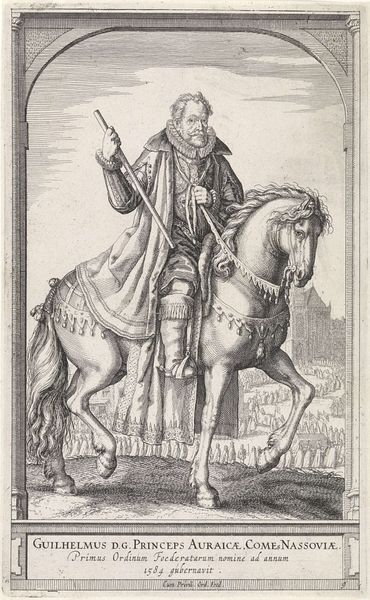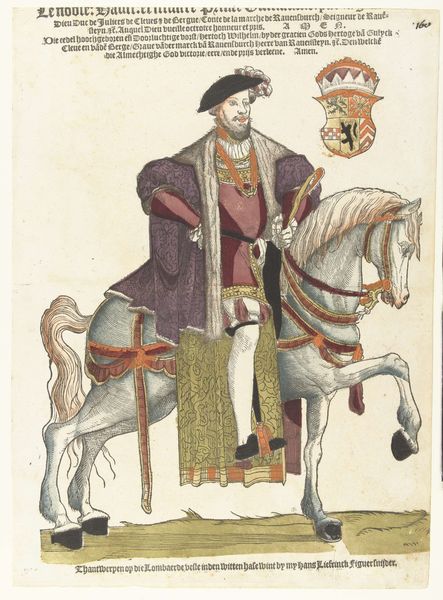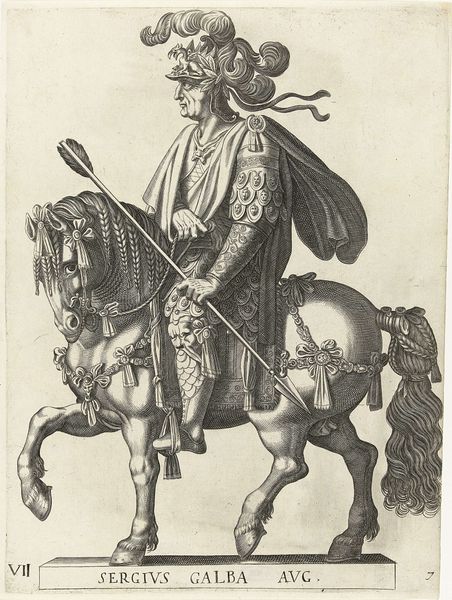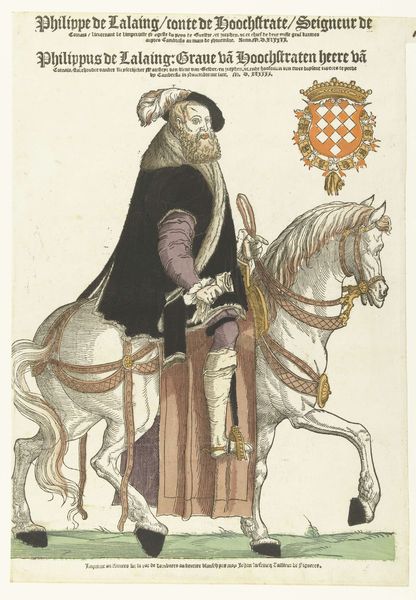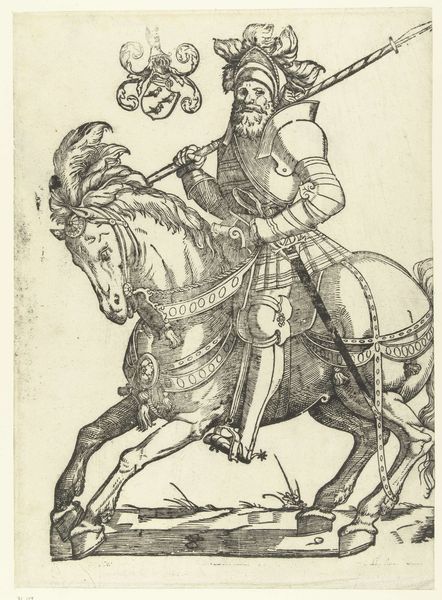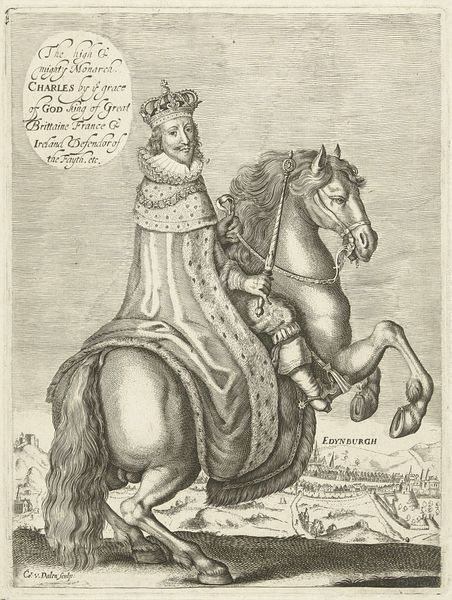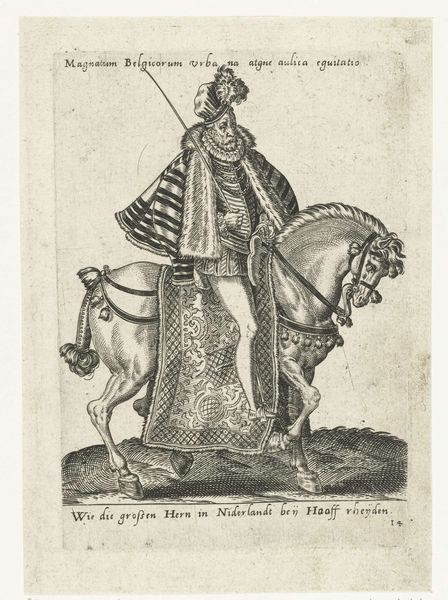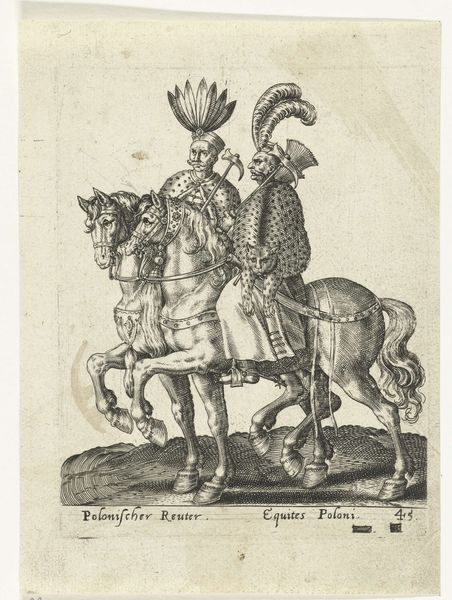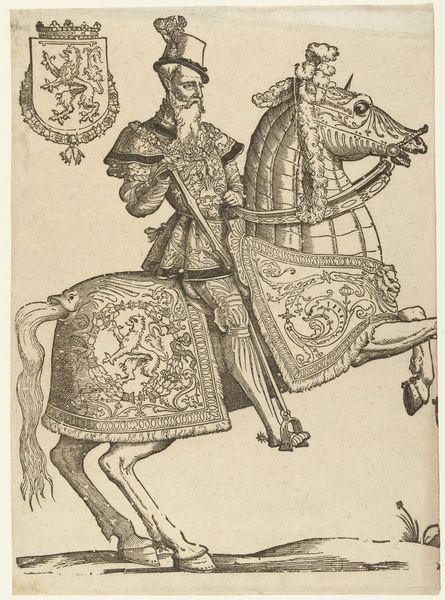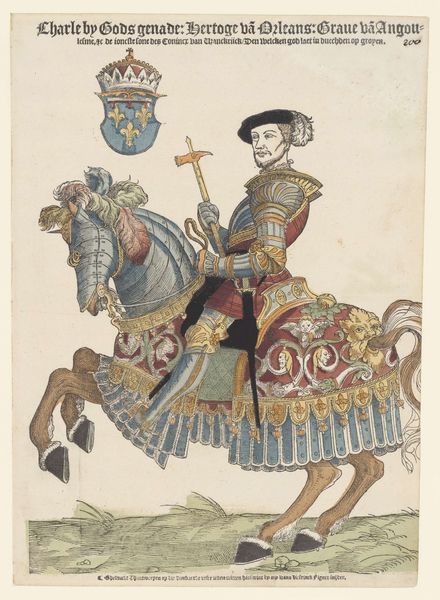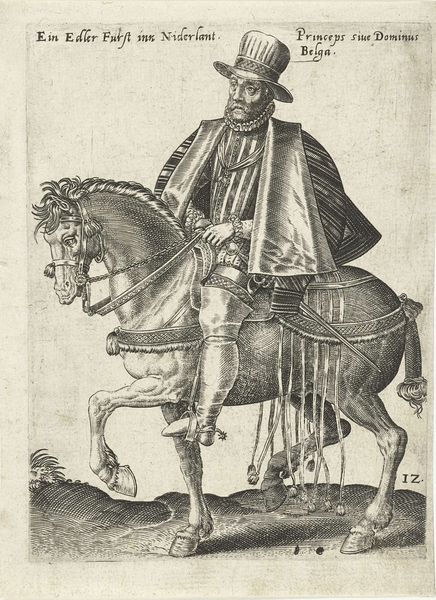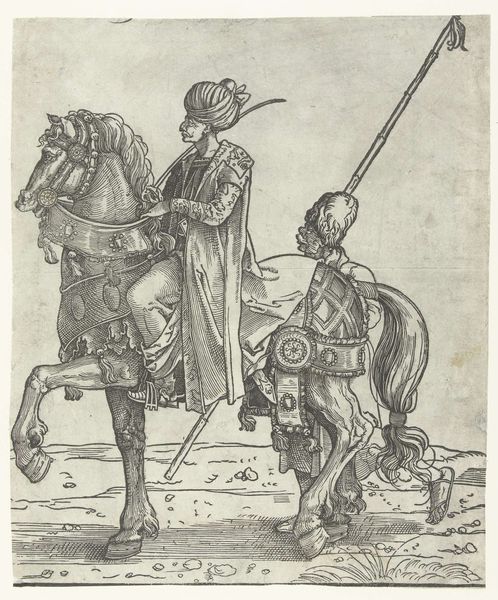
print, engraving
#
portrait
# print
#
pen sketch
#
figuration
#
line
#
history-painting
#
northern-renaissance
#
engraving
Dimensions: height 414 mm, width 340 mm
Copyright: Rijks Museum: Open Domain
This print of Saint Nicholas was made in Amsterdam in the 16th century by Cornelis Anthonisz. It presents the figure of Saint Nicholas not as a religious icon, but as a symbol of civic virtue and authority. Notice how Saint Nicholas is depicted on horseback, bearing a coat of arms. Such imagery would have resonated deeply within the specific social and political context of 16th-century Amsterdam. During this time, the city was experiencing a period of rapid economic growth and social change, and the figure of Saint Nicholas was seen as a guardian of traditional values and social order. The coat of arms suggests the importance of family and lineage within Amsterdam's social hierarchy. Understanding the historical context of this print requires looking into the social and political structures of 16th-century Amsterdam. Through studying archival documents, we might better understand the role of civic institutions and the values they sought to promote. The meaning of art is always contingent on its social and institutional context.
Comments
rijksmuseum about 2 years ago
⋮
To meet the increasing demand for images of Saint Nicholas, the publisher Barent Koene took a damaged 16th-century woodblock with a portrait of Emperor Charles v and had it reprinted with the name of the saint on top. The emperor’s original headdress, a beret with a feather, was transformed by a well-aimed swipe of red ink into a sort of nightcap, and there you have your kindly saint.
Join the conversation
Join millions of artists and users on Artera today and experience the ultimate creative platform.

